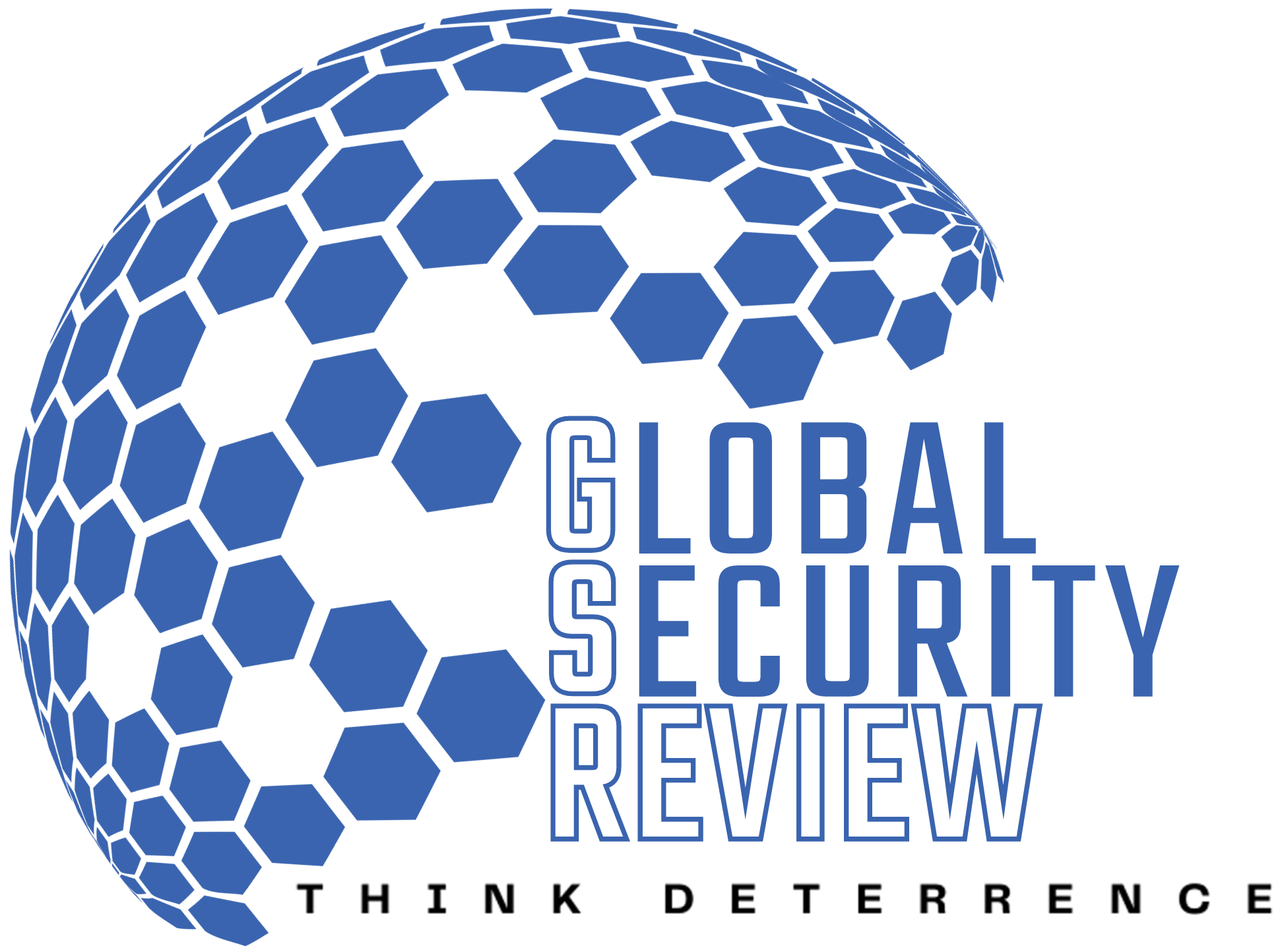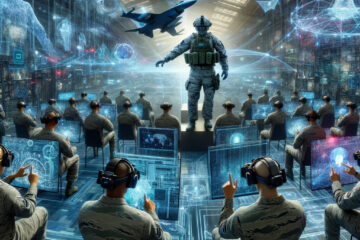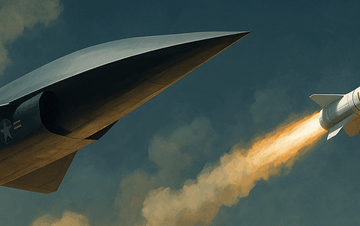Secretary of Defense Pete Hegseth’s recent “Message to the Force” is not merely a call to arms; it is a strategic blueprint to reshape American nuclear deterrence. It is a bold attempt to reverse the relative decline of American military might. His vision, born from a conviction that adversaries have grown emboldened by perceived American hesitancy, aims to forge a revitalized nuclear posture, one predicated on strength, resolve, and the restoration of a warrior ethos.
Secretary Hegseth, a veteran with combat experience in Iraq and Afghanistan, emerged from a military culture defined by counterinsurgency warfare, rapid technological adaptation, and constrained rules of engagement. His formative years were shaped by the leadership of prominent figures like General (Ret.) David Petraeus and General (Ret.) James Mattis, who emphasized adaptive leadership, decisive action, and strategic communication. The norms of that era often prioritized minimizing civilian casualties, leveraging asymmetric warfare, and coalition-based operations. Given this background, Hegseth’s emphasis on restoring a warrior ethos and projecting unyielding strength likely stems from his own military experiences and the influential leaders who shaped his perspective.
Hegseth’s message signals a deliberate shift away from the strategic ambiguity that may embolden adversaries. The emphasis on deterrence through strength suggests a belief that Russia’s nuclear brinkmanship, China’s rapid arsenal expansion, and North Korea’s unpredictability stem from a perception of American hesitancy. One might observe that the concept of strategic ambiguity, once hailed as a nuanced tool of deterrence, now appears as outdated as the punch-card computers that once calculated nuclear trajectories.
This shift reflects a growing concern about the credibility of extended deterrence and the need for more explicit signaling of American resolve. By modernizing the nuclear triad and reaffirming America’s willingness to use force, the Pentagon aims to reinstate fear as a core pillar of deterrence.
The emphasis on reviving the warrior ethos implies that nuclear deterrence must be as much about mindset as it is about capability. It is striking to note that the last time a Secretary of Defense emphasized a similar warrior ethos, the world was still reeling from the Cuban Missile Crisis, a stark reminder of the high stakes involved. The focus on a warfighting mentality suggests a move away from the bureaucratic approach that dominated nuclear policy in recent decades. It is a move toward a more operational and combat-focused posture.
The intent may be to move away from a risk-averse approach, ensuring that warfighters at all levels understand nuclear deterrence as an active, rather than passive, responsibility. This shift could result in more frequent readiness drills, a recalibration of nuclear employment thresholds, and strategic force posturing that prioritizes offensive capabilities over restraint.
China is projected to reach nuclear parity with the US by 2035, while Russia continues aggressive arsenal expansion and hybrid warfare tactics. Hegseth’s directive appears motivated by a desire to prevent a world where nuclear deterrence is no longer dictated by American supremacy. This shift away from the established norms of strategic restraint is a necessary adaptation to a multipolar world, or it could be a dangerous escalation that precipitates a new arms race.
There is an inherent tension between maintaining strategic dominance and fostering international stability. Modernization efforts—accelerated intercontinental ballistic missile production, hypersonic weapons, and a stronger nuclear-capable bomber fleet—align with an intent to sustain America’s dominant position before near-peer threats fully materialize.
The call to rebuild the military by rapidly fielding emerging technologies may suggest a strategic push toward AI tools that enable improved nuclear command and control, quantum-resistant encryption, and space-based early warning systems. The intent behind these investments appears twofold. First, there is a desire to ensure American nuclear forces cannot be neutralized by cyber, space, or electronic warfare. Second, there is a desire to establish deterrence dominance through superior technological integration before adversaries close the gap.
If this is a return to a bold, George S. Patton-style of leadership, where decisive action and unwavering resolve are paramount, it could also risk a dangerous overemphasis on military solutions at the expense of diplomacy. This approach raises crucial questions about the balance between technological innovation and strategic prudence.
Hegseth’s message reaffirms commitment to American allies, signaling that extended deterrence remains a central policy. The intent appears to be preempting concerns of American disengagement from NATO and Indo-Pacific security commitments while simultaneously warning adversaries, especially China, that American nuclear resolve is non-negotiable. Some may assume that a more aggressive posture inherently breeds instability, paradoxically, it could also create a more stable balance of power by clearly defining red lines and deterring potential aggression.
This strategy hinges on the assumption that adversaries will respond rationally to demonstrations of force. This could translate into increased nuclear deployments to allied territories; stronger trilateral deterrence initiatives between the US, UK, and Australia (AUKUS); and a renewed focus on NATO’s nuclear-sharing agreements to counter Russian regional threats.
Secretary Hegseth’s “Message to the Force” signals an intentional and urgent shift in US nuclear strategy—one motivated by a belief that deterrence is eroding and must be aggressively rebuilt. Whether through new weapons systems, a hardened warrior mindset, or the integration of cutting-edge technology, the modernization push under his tenure will likely define the next era of American nuclear policy.
Brandon Toliver, PhD, serves on the A4 staff of Headquarters Air Force. The views expressed are those of the author and do not reflect the official guidance or position of the United States government, the Department of Defense, the United States Air Force, or the United States Space Force.





Excellent breakdown of the evolving deterrence landscape! NATO’s cohesion relies on steadfast US commitment, and modernizing capabilities ensures that the alliance remains effective in countering emerging threats. A strong NATO means a safer Europe.
I’m pleased the article provided a helpful breakdown. The vital link between steadfast US commitment and NATO cohesion, the necessity of modernizing capabilities against emerging threats, and the fundamental truth that a strong NATO is indeed foundational to a safer Europe are well taken points.
A fascinating read to hear an American perspective. NATO’s role in collective defense remains indispensable, and it’s reassuring to see renewed emphasis on deterrence and military readiness. Strategic ambiguity has its place, but clear, resolute action is often the strongest deterrent.
Isabelle, thank you for taking the time to comment and for your kind words about the American perspective presented. It’s reassuring to hear your agreement on NATO’s indispensable role in collective defense and the importance of renewed emphasis on deterrence and readiness. You’ve articulated the dynamic between strategic ambiguity and clear, resolute action very well. It’s a delicate but crucial balance in effective deterrence.
An insightful analysis of shifting deterrence strategy! The reaffirmation of NATO commitments is crucial at a time when European security is increasingly threatened. Strengthening extended deterrence and ensuring a credible nuclear posture reinforces the alliance’s stability and unity. Well written!
Lukas, I truly appreciate your comment and your characterization of the analysis as insightful. You’ve captured the core message about the importance of reaffirming NATO commitments during this period of heightened European security threats. Your emphasis on strengthening extended deterrence and ensuring a credible nuclear posture as key elements for alliance stability and unity is precisely on point. Thank you for recognizing these crucial factors. If our leaders could have fruitful dialogue like this we’d be better off!
Newsflash from this post: Leadership isn’t static. If we want to preserve peace and stability, we need to be proactive, not reactive.
Spot on. I need you to be my hypeman! Thanks for the feedback.
China is testing the boundaries in cyber and in space. Time to Rethink resolve and readiness. Hegseth’s Doctrine could be the catalyst for a much-needed debate on how America can maintain credible deterrence in the 21st century.
Thank you for pointing out the importance of addressing emerging challenges in cyber and space. Indeed, China’s advancements in these realms demand renewed focus on our resolve and readiness. Hegseth’s Doctrine aims to spark this essential debate, emphasizing that credible deterrence in the 21st century must evolve to meet unconventional threats head-on.
I appreciate the idea that deterrence is forward-looking. Emerging tech. Unconventional threats. Time for our strategies to evolve. It’s not enough to rely on past successes; we have to anticipate and prepare for what’s next.
I appreciate your reflection on the necessity of forward-looking strategies. Our reliance on past successes can sometimes hinder progress, and you’re absolutely right that anticipation and preparation are key. Incorporating emerging technologies into our strategic framework is a core tenet of the proactive approach I advocate for in my piece.
This perspective really resonates—deterrence isn’t just about maintaining the status quo, but about adapting to new threats and opportunities. Hegseth’s Doctrine seems to push us to redefine what American leadership looks like.
Your comment highlights an essential truth about deterrence—it’s not static but dynamic, requiring constant adaptation. Hegseth’s Doctrine challenges us to embrace a leadership model that evolves with the times, redefining our strategies to address both threats and opportunities. Thank you for resonating with this perspective.
A powerful and layered message—this isn’t just about military modernization, but a broader shift in strategic philosophy and global posture. The emphasis on mindset, technological dominance, and unambiguous deterrence marks a significant turning point. certainly a moment worth paying close attention to
I’m grateful for your thoughtful analysis of the broader implications of Hegseth’s Doctrine. You’ve captured the essence of what I hope to convey—a paradigm shift in strategic philosophy that combines mindset, technological dominance, and decisive deterrence. It’s a significant moment, and I agree that the world should pay close attention to how these ideas unfold.
“American nuclear resolve is non-negotiable”
Mic drop!
Absolutely. That unwavering resolve is the cornerstone of deterrence. It’s a message that leaves no room for doubt—clear, strong, and essential.
Whether this shift is a necessary adaptation or a dangerous escalation remains to be seen. One thing is simple. A strong defense is the best way to prevent conflict. Hegseth’s doctrine seems to align with that principle.
You’ve captured the essence of the doctrine perfectly. A strong defense has always been a proven deterrent, and Hegseth’s approach reinforces that timeless principle while adapting to modern challenges.
The comparison to Patton’s leadership style resonates. Decisive action is important. it must be coupled with strategic prudence to avoid unintended consequences. Hegseth’s reaffirmation of commitment to allies is key. Extended deterrence only works if our allies trust our resolve, and this message aims to reinforce that trust.
From your lips to God’s ears! The balance between decisive action and strategic prudence is critical, and Hegseth’s focus on reaffirming alliances is a vital component of extended deterrence. Trust and resolve go hand in hand. Do me a favor. Browse the site to engage in the broader discussion, share your perspective, and discover more topics that encourage reflective and dynamic discourse.
We need something. If China will reach nuclear parity with the US by 2035, then it’s red alert time. I think that’s why Trump and Hegseth have the urgency they do. It’s a reality we need to confront strategically and IMMEDIATELY.
You’re right—urgency is key. The prospect of nuclear parity demands a proactive and strategic response, and Hegseth’s doctrine reflects the seriousness of this challenge. I hope you continue actively participating in the discussion on the site, share your insights, and stay connected for upcoming topics designed to inspire meaningful dialogue.
What we need. focus on a ‘warfighting mentality’ in the context of nuclear deterrence. brings back memories of the constant readiness we maintained. It’s a mindset that requires vigilance at all levels.
That ‘warfighting mentality’ is indeed a powerful reminder of the vigilance required to maintain deterrence. Constant readiness has always been a cornerstone of effective defense. Dive into the full discussion on the site, add your voice to the conversation, and keep an eye out for more thought-provoking topics coming your way!
This is one of the few objective articles I’ve seen on the new SecDef. Toliver must have served. Brings up a valid point about the tension between maintaining dominance and fostering stability. Finding that balance, as Hegseth navigates this new doctrine, will be critical for global security. He’s shaking things up.
Thank you for the kind words. I’ve worked in some capacity for the nation most of my adult life, and yes I wore the uniform in the Navy. Hooyah. The balance between dominance and stability is indeed delicate, and Hegseth’s approach aims to navigate that tension thoughtfully while addressing evolving global security challenge. We need folks like you to be part of the ongoing dialogue on the site, express your views, and stay tuned for more subjects that foster engaging and impactful conversations.
Good old COIN. Hegseth’s background in counterinsurgency warfare, as gives him a unique perspective on deterrence todays battlespace. It’s interesting to see how those experiences might shape his approach to nuclear strategy.
Great observation brother! Hegseth’s COIN background does offer a unique lens for understanding deterrence in today’s complex battlespace. It’s fascinating to see how those experiences influence his strategic thinking. There are some great writers and wise strategic sages on this platform. Browse the site to engage in the broader discussion, share your perspective, and discover more topics that encourage reflective and dynamic discourse.
My favorite part is the discussion about modernizing the nuclear triad. As someone who served, I can say that keeping our technology ahead of potential adversaries is crucial for maintaining deterrence, just as Hegseth suggests. You don’t have to be a General to know that.
Thank you for sharing your perspective. Modernizing the nuclear triad is indeed a critical priority, and staying ahead technologically is essential for maintaining effective deterrence. Explore the conversation in full across the website, contribute your thoughts, and look forward to future discussions that aim to challenge perspectives and spark ideas.
The article mentions the shift away from strategic ambiguity. From my experience, clear communication of intent, as Hegseth seems to advocate, can prevent misunderstandings that could escalate situations.
Absolutely. Clear communication of intent is a powerful tool for preventing escalation, and Hegseth’s doctrine reflects the importance of transparency in maintaining stability. Join the discussion on the site, share your insights, and stay connected for upcoming topics designed to inspire meaningful dialogue
Reading this, it reminds me of the constant balancing act we faced. Hegseth’s emphasis on a ‘warrior ethos’ is something I understand, but we also need to be mindful of the diplomatic side, as the article touches on.
You’ve captured the duality perfectly. The ‘warrior ethos’ is vital, but diplomacy remains an equally important pillar in navigating the complexities of deterrence and global security. Dive into the full discussion on the site, add your voice to the conversation, and keep an eye out for more thought-provoking topics coming your way!